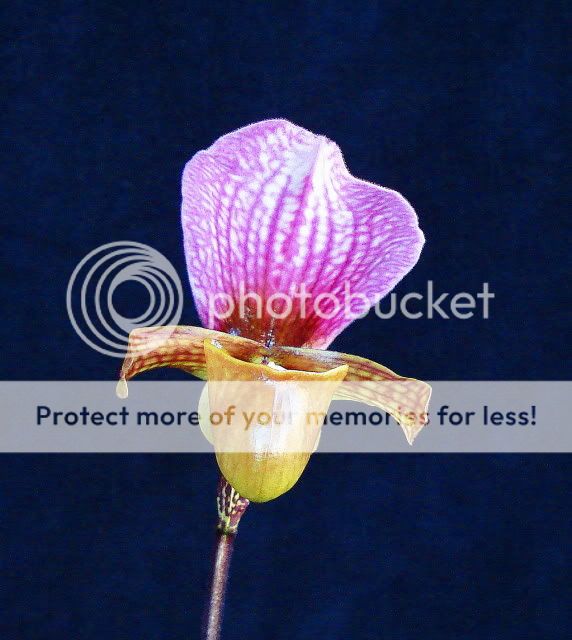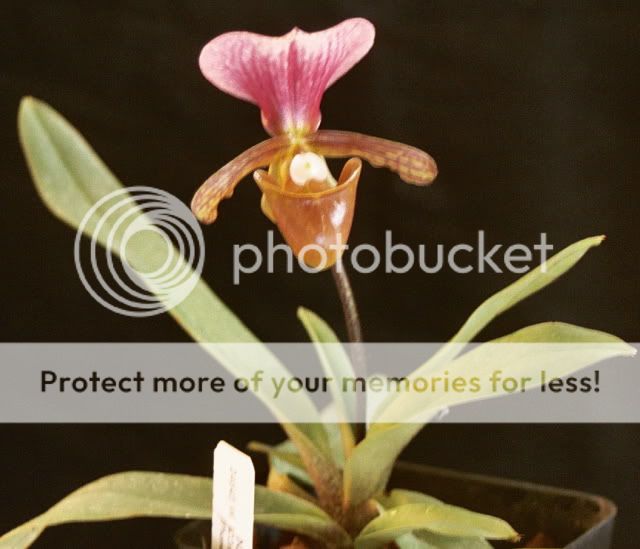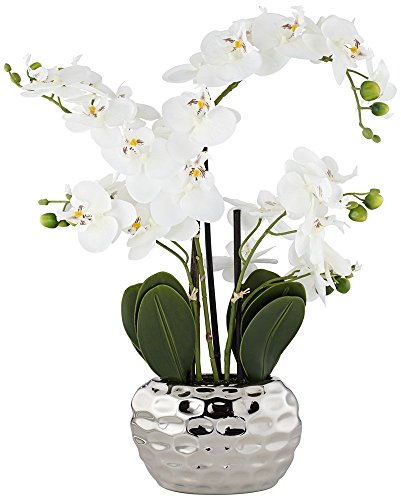I
You are using an out of date browser. It may not display this or other websites correctly.
You should upgrade or use an alternative browser.
You should upgrade or use an alternative browser.

Help Support Slippertalk Orchid Forum:
This site may earn a commission from merchant affiliate
links, including eBay, Amazon, and others.
B
biothanasis
Guest
Amazing colouration!!! I love it!
SlipperKing
Madd Virologist
Really nice chucks. A few have commented on Ice's spicerieanum also posted about the flat dorsal, not caring for it. If memory serves me well, it wasn't that long ago charlesworthiis all had reflexed dorsals. Now its all the craz to have flat dorsalled charlies. Why fantastic for one but not the other?
W. Beetus
Well-Known Member
Nice! I like the last one best.
SlipperFan
Addicted
I like #1 best. Nice collection.

$9.95 ($14.63 / Fl Oz)
Eternal Essence Oils 2 Pack 10ml Premium Fragrance Oil - Enchanted Orchid & Water Lily - for Candle, Soap Making, Aromatherapy, Diffusers, Home Care, & Humidifiers
eternal essence oils

$10.22
$10.99
Orchid Basics: Hints, tips & techniques to growing orchids with confidence
Amazon.com

$29.99 ($15.00 / Count)
2 Pink Lady Slipper Orchid Plant Live Bud Roots, Live Orchid Plants Bud for Planting, Rare Orchids Plant
RACHEAL LEE BARRETT

$20.31
$22.95
The Orchid Whisperer: Expert Secrets for Growing Beautiful Orchids (-)
Amazon.com

$49.99 ($25.00 / Count)
2 Lady Slipper Orchids, Yellow Orchids Plants Live Lady Slipper, 2 Medium Root Bulbs Ornament Orchids Plant Root, No Leaf
KIM MARIE SMITH

$31.44
$44.00
Understanding Orchids: An Uncomplicated Guide to Growing the World's Most Exotic Plants
Word Wizards Store

$40.00 ($40.00 / Count)
$48.89 ($48.89 / Count)
hypehouse Allen + roth 8 in. Orchid Pot with Saucer White
TrendyTreads

$27.12 ($2.71 / Fl Oz)
Vitabath Orchid Intrigue Everyday Skincare Set Moisturizing Shower Gel Wash, Reviving Lotion & Exfoliating Body Scrubber Pouf - Alluring Foam Cleanser & Dry Skin Hydration for Women & Men
Class01 USA (we record serial numbers)

$16.50 ($1.65 / Count)
JMsolution Active Orchid Moisture-Korean facial Skin Care Mask- Hydrating-Orchid extract-Hydrating Moisture -10 sheets for dry skin
MABLEST LLC

$11.99 ($0.12 / Count)
CHUXAY GARDEN Cypripedioideae-Lady's Slipper Orchids,Lady Slipper Orchids 100 Seeds Tropical Exotic Orchids Rare Small Orchid
color green

$24.98 ($24.98 / Fl Oz)
SeoulCeuticals Chebula Active Serum for Face - Korean Skin Care Anti Aging Natural K Beauty Skincare With Hyaluronic Acid + Spotted Orchid for Healthy, Youthful Glowing Skin 1oz
Digital Beauty Group
Rick
Well-Known Member
Really nice chucks. A few have commented on Ice's spicerieanum also posted about the flat dorsal, not caring for it. If memory serves me well, it wasn't that long ago charlesworthiis all had reflexed dorsals. Now its all the craz to have flat dorsalled charlies. Why fantastic for one but not the other?
I can't remember in my short 10 year history with slippers seeing charlesworthii with anything but a fairly flat dorsal (certainly nothing as parasol-ed as a spicerianum).
I looked at the couple of drawings of "early" charleys in Cribbs book, and the dorsal reflexes some, but its still pretty round from the front. Since I've never seen what a normal charles is supposed to look like then I can't really comment on it.
Anyone have pictures of in-situ charlesworthii.
I found a few more ancient (pre 1900) drawings by Linden and Curtis. And both show relatively flat round dorsals (though they may tip forward over the lip instead of standing up straight). Drawings of spicerianum from the same time frame show that typical parasol dorsal that "we have all come to love". Sometimes ancient drawings can be pretty fanciful, but at least in the late 1800's people seemed to already be seeing some semblance of flat round dorsals for charles, while the flattening of the dorsal for spicer would appear a more recent and artificial trend.
K
Kevin
Guest
Very nice! I'll have to agree with Rick. All I have known about charlesworthii is that it has a flat dorsal. It looks really nice, but if this is not natural, then I think it would be nice to see some that haven't been line-bred. Sometimes breeding can improve on nature, but for me, not often.
Really nice chucks. A few have commented on Ice's spicerieanum also posted about the flat dorsal, not caring for it. If memory serves me well, it wasn't that long ago charlesworthiis all had reflexed dorsals. Now its all the craz to have flat dorsalled charlies. Why fantastic for one but not the other?
It is a characteristic part of a spicerianum bloom to have a tubular dorsal, while it is typical for a charlesworthii to have a sail like dorsal.
IMO it underlines the character of a charlesworthii, to flatten and increase its dorsal, while it destroys the typical appearance of a spicerianum, to flatten the funnel of its dorsal. Nobody would breed sanderianum for short broad petals, but for petals as long as possible for underlining its character!
I would prefer to linebreed spicerianum for a big triangular dorsal and clear bright colors (green, red, white, without brown). But this are my personal preferences.
Nevertheless it isn't true, that I don't care for that flat dorsalled spicerianum! IMO it could be very helpfull to breed new mini complex slippers. For this reason I wished to have one like this! But I really don't care for it as a member of the species P. spicerianum.
E
Ernie
Guest
Yeah, IMO cw's dorsal flaw is that it can lay too flat over the pouch. Current breeding is opening them up very nicely. I like where cw breeding is going, but not spice, similar to fibre's comments.
slippertalker
Well-Known Member
It is a characteristic part of a spicerianum bloom to have a tubular dorsal, while it is typical for a charlesworthii to have a sail like dorsal.
IMO it underlines the character of a charlesworthii, to flatten and increase its dorsal, while it destroys the typical appearance of a spicerianum, to flatten the funnel of its dorsal. Nobody would breed sanderianum for short broad petals, but for petals as long as possible for underlining its character!
I would prefer to linebreed spicerianum for a big triangular dorsal and clear bright colors (green, red, white, without brown). But this are my personal preferences.
Nevertheless it isn't true, that I don't care for that flat dorsalled spicerianum! IMO it could be very helpfull to breed new mini complex slippers. For this reason I wished to have one like this! But I really don't care for it as a member of the species P. spicerianum.
All of this is quite subjective, depending on your vision of what the species should represent. Selective breeding gives us flowers that are larger, more richly colored, have larger segments that are flatter. Why it should be preferred in charlesworthii more than spicerianum is nothing more than a bias.
If we went back to most of the jungle grown plant material, I'm sure many would be very disappointed in the quality. Most paph species have been "improved" vastly over the last 20 years. A better comparison to spicerianum would be purpuratum which also reflexes back typically, but newer versions are quite a bit more flat.
Except for the album version I have never been a fan of charlesworthii. This bloom i would buy. Consider that a complement!
All of this is quite subjective, depending on your vision of what the species should represent. Selective breeding gives us flowers that are larger, more richly colored, have larger segments that are flatter. Why it should be preferred in charlesworthii more than spicerianum is nothing more than a bias.
If we went back to most of the jungle grown plant material, I'm sure many would be very disappointed in the quality. Most paph species have been "improved" vastly over the last 20 years. A better comparison to spicerianum would be purpuratum which also reflexes back typically, but newer versions are quite a bit more flat.
Ofcourse, my opinion is quite subjectiv. As subjective as every opinion is. But it is wrong, that it is nothing more than a bias. You better don't devalue a well justified opinion to be only a bias!
Again, I think, "flatter is better" is to simple! IMO we have to differentiate!
SlipperFan
Addicted
I agree, fibre. I wonder sometimes if all the enamoring of "round" isn't changing everything to ultimately look the same. Maybe colors & patterns different, but all the same shape. Ugh.
slippertalker
Well-Known Member
If that is true, then people need to explain that to commercial nurseries that create flat, big and brightly colored. Despite what many say, when it comes down to purchasing such a plant, they will always go for the bigger and better one.
SlipperFan
Addicted
But better isn't necessarily round. Or flat.
Rick
Well-Known Member
I agree, fibre. I wonder sometimes if all the enamoring of "round" isn't changing everything to ultimately look the same. Maybe colors & patterns different, but all the same shape. Ugh.
Yup. I can only stare into a kaleidoscope for so long. Even if no two patterns are ever identical its still a round circle.
There's subjective levels of appreciation for what Mother Nature has to offer. Some of us can see the beauty of a butt ugly creature (or flower) and realize its perfection in its purpose in the wild. Some of us feel that the wild form is too compromised by the rough circumstances of surviving in the wild, and feel that perfection is achieved by removing these compromises in the greenhouse. Everyone is somewhere on the continuum.
I can't remember in my short 10 year history with slippers seeing charlesworthii with anything but a fairly flat dorsal ...
Just for illustration, here are a few recent bloomings from various crosses (all from different sources) showing that not all charlesworthii have flat dorsals. Very interesting discussion!



SlipperFan
Addicted
Yes! And here is where personal preference comes in. I like the waviness of the first one -- just lovely.
Rick
Well-Known Member
Just for illustration, here are a few recent bloomings from various crosses (all from different sources) showing that not all charlesworthii have flat dorsals. Very interesting discussion!
Very rarely is anything "all" or "never" in orchid culture. At least from the shot angles the 3rd one is starting to parasol like a spicer or treanlineanum. The first two could arguable called "fairly flat", but definitely not round, or having lots of ruffles. Are these "throwbacks" to the original look, or lunatic fringe? Also if these were the only 3 CW's out there, which one would be considered normal, since there is little similarity between any of them.
None of these are as flat and round as the pre 1900 artist rendition, which could be:
1) accurate depictions of highly cherry picked bloomings,
2) accurate depictions of the average of a handful plants, or
3) completely imagined or exaggerated flowers.
We see lots of variation in species flowers all the time (even from the same plant year to year), but what's the 90th percentile norm for the species? Where's those in-situ pics??
Similar threads
- Replies
- 7
- Views
- 582

































